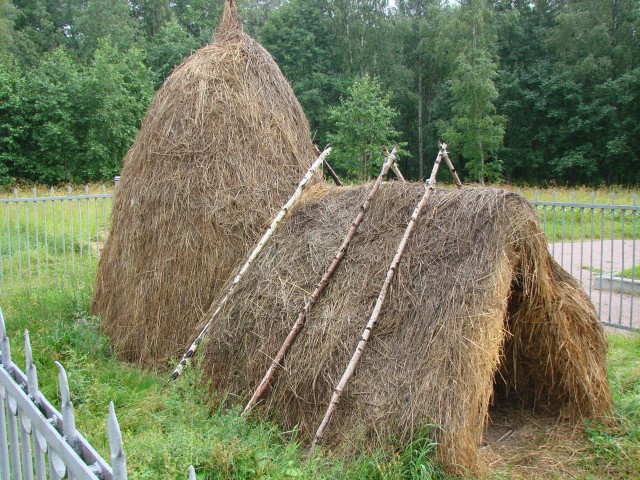Instruction
1
Select a place to build a hutand it should be neither a valley nor a hill. Select a flat area, sheltered from the wind, surrounded by trees and bushes.
2
Selecting a site to build a shelterand prepare two or more long sticks. Lay two sticks on both sides of the long sturdy tree branch and tie the top with rope. Also you can take a few sticks and tie them in an inclined position to the tree in a circle over the upper ends, making it more spacious, circular tent.
3
Sticks tightly tied, pull on them a tent made of canvas or other material that is pinching the edges, crushing them with heavy rocks. If you don't have a tent, use spruce and pine twigs, which you can dial in the woods, or branches of deciduous trees.
4
Cover with twigs and branches of a tentto create the most dense roof. A hut covered with branches and twigs, is not able to be fully closed – you'll be able to hang the entrance of only specifically found the canopy.
5
In the case of a tentom, a closed top, you can use to login to the vertical stick, stuck at the entrance, which supports the edge of the awning.
6
To close the tent, remove the stick and lower the awning. Tent is ready – as you can see, it is made easy and in the event of an emergency can help protect you in the woods from the weather and cold.
Note
Well constructed shelter protects from rain and even hail (own experience) water with it slipping as with a conventional roof. For the construction of the shed will match almost everything you find around (spruce or fir twigs, reeds, hay, straw, grass). How to make a fabric waterproof (for tent, awning, tent, raincoat). Making tents with his hands.
Useful advice
How to build a tent in the woods? The construction of the shelter in the forest, along with producing fire, food and water, is the basis of survival. A lean-to shelter is a canopy. Allows to protect himself from the wind, if it is set against the wind, and also serves as a screen that reflects heat from the fire. If you have a sleeping bag, the shelter can spolzovat from late spring to late autumn.

